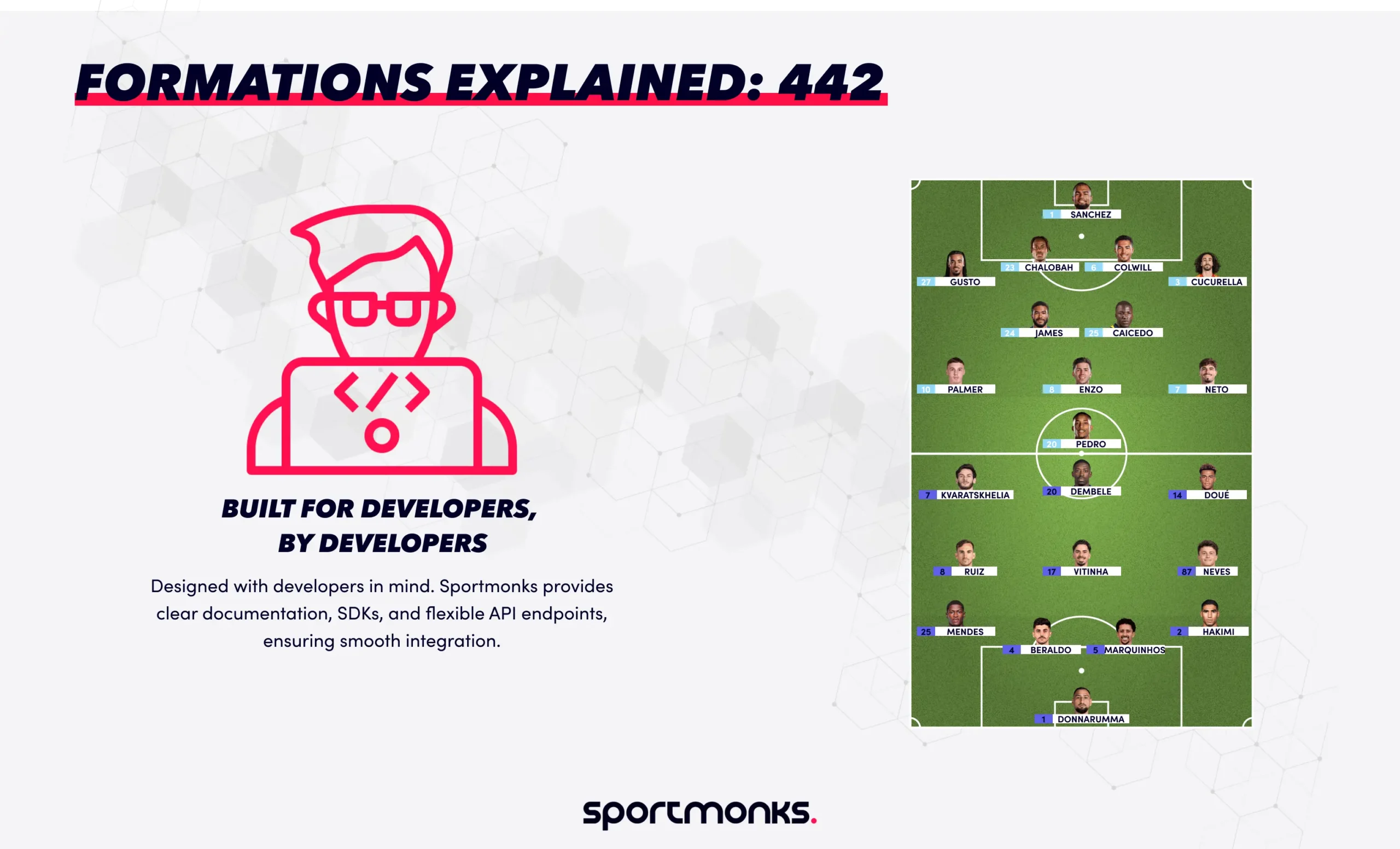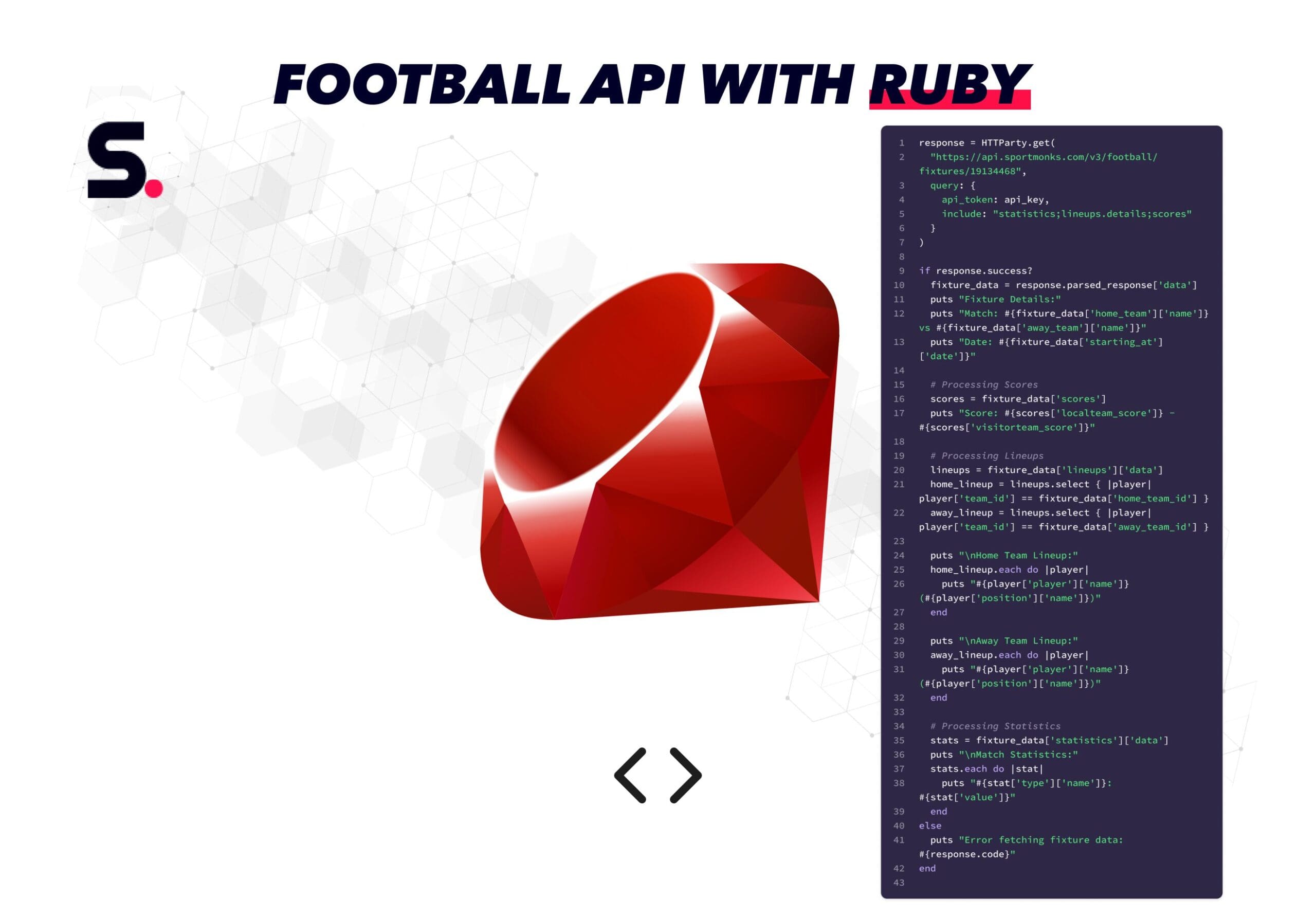
Contents
Historical origins & evolution
The 4-4-2 formation started to take shape in the mid-20th century. It evolved from Brazil’s famous 4-2-4 formation, which brought them success at the 1958 and 1970 World Cups. In that system, two true wingers played high up the pitch, creating a wide, attacking threat. It was a Russian coach named Vladimir Maslov who had the clever idea of dropping these wingers deeper. This created a more stable midfield, which was the beginning of the balanced 4-4-2 layout.
However, it was Arrigo Sacchi’s AC Milan who truly made the 4-4-2 famous in elite European football. In the late 1980s and early 1990s, Sacchi’s team used a high-pressing defensive line and an offside trap. This tactical approach helped them win multiple European Cups and made the formation a legend.
At the same time, on the other side of the English Channel, Sir Alex Ferguson at Manchester United refined and popularised the 4-4-2 in the Premier League. Under his management, the team achieved long-lasting success throughout the 1990s and early 2000s, using the formation’s balance to dominate both in England and in European competitions.
Basic structure & roles
Defensive line (back four)
– Central defenders (centre-backs): Positioned in the middle of the defence, they are the core of the team’s back line. Their job is to organise the defence, stop opposing attackers, and win aerial battles.
– Full-backs (left and right backs): These players are on the outsides of the two centre-backs and provide defensive width. When the team is on the attack, they often push forward past the wide midfielders to deliver crosses, giving important support on the wings.
Midfield quartet
– Central midfielders: The two central midfielders link the defence and attack. One often has more defensive duties, such as intercepting passes and protecting the back four. The other usually plays a more creative, attacking role, connecting the play with the forwards and wide midfielders.
– Wide midfielders (wingers): These players are positioned on the wings to stretch the opposition’s defence and provide crosses. They might also cut inside to create goal-scoring opportunities. When the team is defending, they must track back to help their full-backs and keep the midfield compact.
Attacking duo (forwards)
– Two strikers: The two strikers work as a pair. One striker often acts as a “target man,” holding the ball up and drawing defenders, while the other looks for space, runs in behind the defence, and finishes chances. Together, they put pressure on the opposition and create opportunities to score.
Tactical strengths of the 4-4-2 formation
The 4-4-2 formation has stood the test of time due to several tactical advantages that make it reliable and effective across different levels of football.
Defensively robust – two banks of four
When defending, the formation lines up in two solid “banks”, the four defenders and four midfielders. This allows the team to shift together across the pitch to cover wide and central spaces. As one player presses the ball, the others in the line provide cover and support, making it very difficult for the opposition to break through.
Natural width and structured pressing
Wide midfielders (or wingers) working with the full-backs provide a consistent wide attacking threat. This enables overlapping runs, crosses, and the ability to outnumber the opposition in wide areas. The formation also offers a strong pressing setup: two forwards lead the press, supported by four midfielders behind them, which helps them control the pitch and block off passing options.
Ideal for counter-attacking play
The formation’s structure with two forwards positioned high up the pitch and dynamic wide players makes it very effective for quick attacks. The clear roles allow the team to move from defence to attack quickly, taking advantage of any spaces left by the opposition.
Simplicity, balance, and versatility
The formation is straightforward, so players can easily understand their roles in both attacking and defending. This balance and clarity make it adaptable. It can be just as effective whether a team is focusing on being compact in defence or launching quick attacks.
Tactical weaknesses of the 4-4-2 formation
While praised for its clarity and balance, the 4-4-2 formation has some significant weaknesses, especially in the modern era of football where flexibility and control of the midfield are key.
Midfield overload – outnumbered in central areas
With only two central midfielders, a team playing a 4-4-2 can easily be outnumbered by systems like the 4-3-3 or 4-2-3-1. This makes it difficult for them to keep possession or control the pace of the game.
Heavy dependence on wide players
The success of a 4-4-2 relies heavily on its wide midfielders (or wingers) to both attack from the wings and help out in defence. If these wide players are not effective or fail to track back to help their full-backs, the team risks losing its balance and creative spark.
Predictability and limited creative play
Without a dedicated attacking midfielder (a “number 10”), the formation can lack creative depth. This makes it harder to break down well-organised defences or create dynamic passing combinations.
Demanding physical requirements
Midfielders and wide players in a 4-4-2 must cover a large area of the pitch, supporting attacks, tracking back, and pressing the opposition. This constant dual role can lead to player fatigue, especially when playing against teams with a high tempo.
Vulnerable to modern tactical evolutions
Modern formations and strategies, which focus on fluid positions, pressing, and playmakers operating in the spaces between the lines, can expose the rigid nature of the traditional 4-4-2 shape. Teams like Pep Guardiola’s sides or those using a “false nine” striker often take advantage of its structural weaknesses.
Tactical variations & adaptations of the 4-4-2 formation
Though the classic 4-4-2 is often seen as a flat formation, its ability to adapt has led to several effective changes. Here’s a look at its most notable variations:
4-4-2 diamond (or 4-diamond-2)
This variation changes the midfield into a diamond shape, consisting of:
– A deep-lying defensive midfielder (a number 6).
– Two central midfielders (number 8s) who cover a lot of ground.
– An attacking midfielder (a number 10) who plays just behind the two strikers.
Origins: The 4-4-2 diamond started to emerge when a centre-forward began to drop back into midfield. Brazil’s tactics in the 1960s and England’s winning team in the 1966 World Cup showed early signs of this. Over time, this evolved into the diamond-shaped midfield we see today.
Strengths:
– It gives a team more control in the central areas of the pitch.
– It supports a style of play based on keeping possession.
– It adds a creative threat through the attacking midfielder (number 10).
Drawbacks:
– It naturally lacks width because there are no traditional wingers.
– It can be exposed on the flanks, especially by fast counter-attacks.
– It requires extremely fit and disciplined full-backs to provide the team’s width.
Traditional flat 4-4-2 with positional nuances
This variation keeps the classic 4-4-2 shape but allows for players to shift their roles:
– Wide midfielders may act like attacking wingers or play in a way that allows them to cut inside more often.
– One striker may drop deeper into a playmaking role. This creates an informal “4-4-1-1” without actually changing the team’s shape.
Modern hybrid systems & tactical adaptations
Contemporary coaches sometimes mix the ideas of a 4-4-2 with flexible, situational setups:
– One striker may roam to create overloads in different areas of the pitch.
– Midfielders may swap roles fluidly during a match, temporarily changing the team’s shape into a 4-2-3-1 or even a 4-3-3.
Practical examples & usage
– Juventus under Max Allegri often used the 4-4-2 diamond formation, which combined a clear structure with control in the midfield.
– Atletico Madrid under Diego Simeone often uses a disciplined version of the 4-4-2, which is more traditional but still very effective.
Iconic examples & modern usage of the 4-4-2 formation
Sir Alex Ferguson’s Manchester United (1990s–2000s)
Under Sir Alex Ferguson, Manchester United consistently used the 4-4-2 as their main tactical formation. Its balance of defensive structure and a flexible attack provided the perfect foundation for their long-lasting dominance in English football.
The formation was a perfect fit for wide players like Ryan Giggs and David Beckham, whose overlapping runs and crosses were extremely effective. The formation’s flexibility also helped them win the historic treble in 1999, as the team combined a solid defence with quick attacks.
Leicester City (2015–16 Premier League champions)
Claudio Ranieri’s Leicester City brought the 4-4-2 formation back into modern football with a tactical masterclass in counter-attacking. The formation made the most of the pace of Jamie Vardy and Riyad Mahrez, allowing the team to move quickly from defence to attack.
Their success proved that the 4-4-2 was still relevant, showing that tactical discipline and intelligence can overcome opponents who focus on keeping possession.
Atlético Madrid under Diego Simeone
Although not a pure 4-4-2, Atlético Madrid’s disciplined and compact style of play under Diego Simeone reflects the defensive strength and attacking efficiency that is typical of the formation.
Legacy and evolution
The 4-4-2 continues to be a symbol of football’s tactical history, used at all levels of the game for its clarity and structure. Even though the modern game favours more fluid, midfield-heavy systems, the principles of the 4-4-2 still exist in hybrid and situational setups.
There have been periods where teams have moved away from the formation and then returned to it. For example, around 2009–10, clubs like Manchester United and Chelsea experimented with back-to-basics versions of the formation to achieve tactical stability.
How to play & implement of the 4-4-2 formation
Playing the 4-4-2 formation well is about more than just where players stand. It requires co-ordinated movement, clear responsibilities, and structured patterns of play. Here is how to bring the formation to life on the training pitch and in matches:
Structure & on-field coordination
The formation is built around three clear lines, a back four, a midfield four, and two strikers which makes it easy to maintain a disciplined shape and stay compact.
Central midfielders need to move in a co-ordinated way. When one pushes forward, the other should drop back to ensure the team is covered in defence while still supporting the attack.
Attacking principles
– Quick switching and use of width: As the midfield can be outnumbered, it is important to switch play to the flanks quickly to stretch compact defences. Full-backs and wide midfielders should co-ordinate their overlapping runs and one-two passes to create crossing opportunities for the strikers.
– Maximising dual striker threat: The two strikers should work together. One player can hold the ball up, creating space for the other to run into and exploit. Midfielders and wide players should make runs to take advantage of any confusion in the opposition’s defence.
– Counter-attacking efficiency: Teams should be able to move quickly from defence to attack. They should practise fast-break patterns, especially when defending set-pieces, to exploit the opposition’s disorganisation.
Defensive tactics
The key to defending with a 4-4-2 is the two banks of four, which create a tight horizontal structure. This allows for co-ordinated pressing and cuts off passing options through the centre of the pitch.
Forwards should start the pressure from the front, while the midfield and defence work together to cover passing lanes and win the ball back.
Patterns of play
Coaches often use pre-planned movement patterns through the centre and wide areas to break down defences. These can involve a striker dropping into midfield, co-ordinated runs from the midfield, and wide overloads to get through compact formations.
Training & preparation
– Role clarity: Define each player’s role clearly. This is especially important for the midfield, where responsibilities can be split, and for the full-back and wide midfielder partnership.
– Focused drills: Create drills that combine defensive compactness with explosive movements for attacking transitions.
– Tactical repetition: Use small-sided games in training to reinforce pressing, switching play, striker partnerships, and the team’s defensive shape.
How to counter the 4-4-2 formation
Despite its historical success, the classic 4-4-2 has weaknesses that opposing coaches often try to exploit. Here are some of the main strategies teams use to outplay this formation:
Overload central midfield with superior numbers
The 4-4-2 typically has only two central midfielders, which makes it easy to outnumber them with formations that use three or more midfielders, such as the 4-3-3, 4-5-1, or 4-2-3-1. These setups help a team dominate possession, use open spaces, and maintain control in the middle of the pitch.
Exploit width with wing-backs or wide forwards
With narrow midfield lines and no natural width, 4-4-2 teams can be exposed on the flanks. Formations like the 3-5-2 and 4-3-3 that use wing-backs or wide wingers can stretch the defence, create situations where they outnumber the opposition (2v1), and open up opportunities for crosses.
Utilise a three-at-the-back build-up
Building an attack from the back can be difficult against a 4-4-2 because the two strikers often block off central passing lanes. Using a back three helps a team outnumber the strikers and creates diagonal passing angles that stretch the opposition’s press. This also allows midfielders to drop into spaces between the lines to receive the ball and start an attack quickly.
Break the compact block with dynamic rotations
The rigid shape of a 4-4-2 can be broken by rotating midfielders, changing where the attack is focused, and pulling defenders out of their positions. The combination of more players and smart movement can cause confusion, creating gaps for players to run into and deliver the ball into dangerous areas.
Tactical formations that outplay the 4-4-2
– 4-3-3: Adds an extra midfielder to control the pace of the game and uses wingers to stretch the opposition’s defence.
– 3-5-2: Combines control in the centre of the pitch with a wide threat from the wing-backs.
– 4-2-3-1: Offers both defensive stability and attacking creativity with a deep-lying midfield pair and a creative “number 10.”
Sportmonks: A premier football data provider
Sportmonks offers extensive and in-depth football data, making it a top choice for anyone interested in tactics, formations, and line-up analysis.
Sportmonks offers extensive and in-depth football data, making it a top choice for anyone interested in tactics, formations, and line-up analysis.
Formation & line-up granularity
Sportmonks’ Football API (v3.0) provides detailed formation data for each match, such as 4-4-2 or 4-3-3. You can get this data using the formations include. The lineups include gives you the full starting eleven and substitutes, with the lineups.detailedposition providing specific roles like right-back or secondary striker. The position types are very detailed, including everything from “left wing” to “centre forward,” all mapped to a standardised ID system.
Predictive line-ups & pre-match insight
Sportmonks’ premium expected line-ups feature predicts the starting teams before they are officially announced. These predictions use various factors like injuries, player form, team trends, and news. This feature, available through dedicated endpoints for both teams and individual players, gives you early access to important line-up information before the match starts.
Developer focus & reliability
Our API is RESTful and JSON-based, with authentication using API tokens. It is easy to integrate into your projects thanks to example requests, Postman collections, and code snippets. Designed for real-time use, it supports live match events, substitutions, and statistical overlays, making it perfect for tactical applications or dashboards.
Analyse formations with Sportmonks
Whether it’s a classic 4-4-2 or a modern hybrid system, formations define how the game is played. With Sportmonks’ Football API, you get detailed line-up and formation data for matches across more than 2,500 leagues worldwide. From starting elevens and substitutes to predicted line-ups and player positions, our API gives you everything you need to study, visualise, or build tactical insights into your platform.
Start your free trial today and unlock formation and line-up data with Sportmonks.



